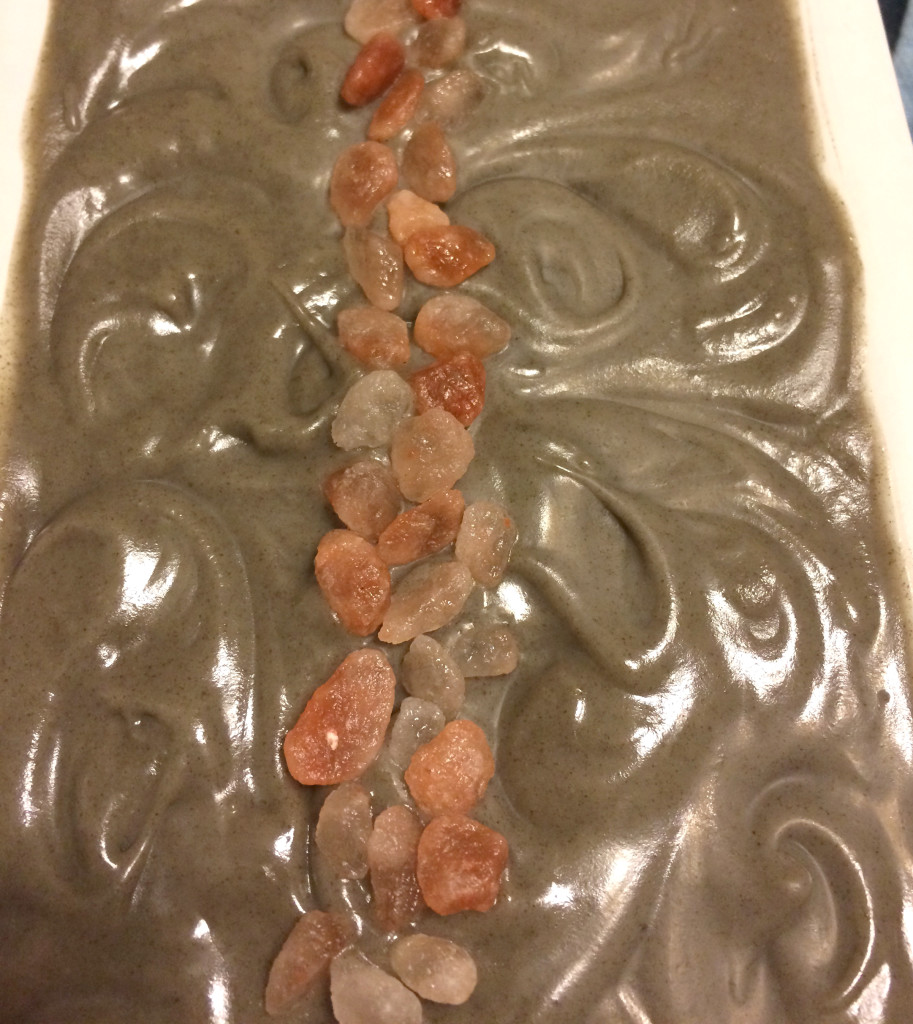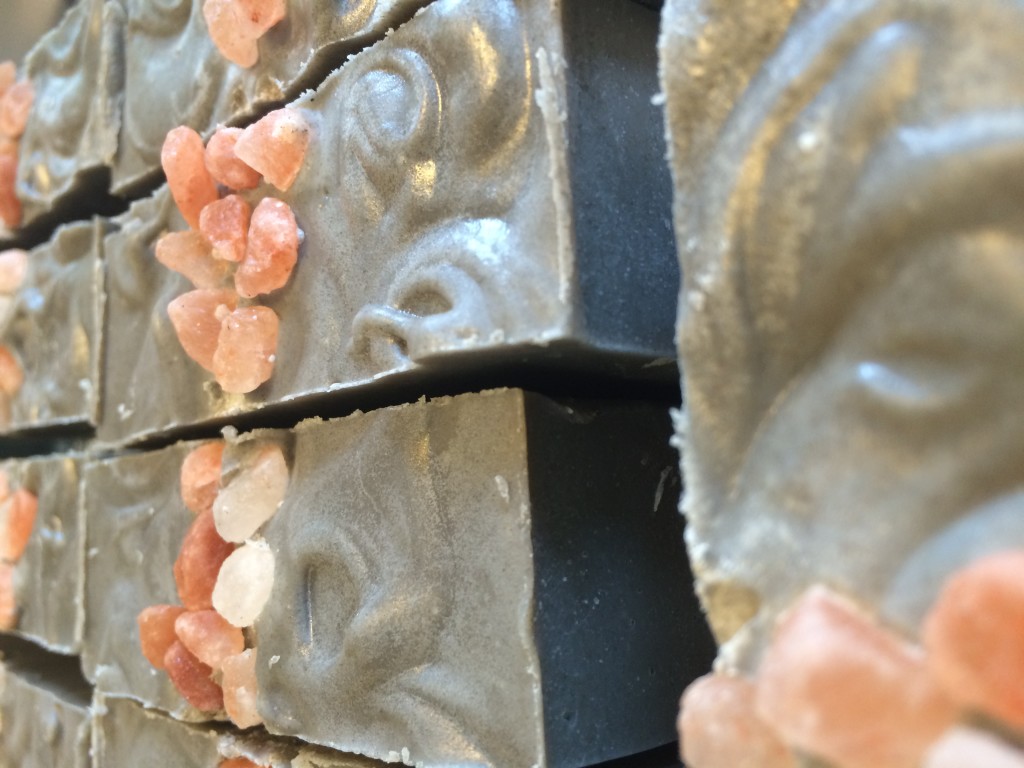The very first bar of handmade soap I fell in love with was a Dead Sea mud bar I used to buy at my local farmer’s market in Georgia before I moved. In fact, it was my love for this bar of soap that drove me to try making my own soap because I wanted to continue to use it, but I didn’t want to have to special order it from my new home in Massachusetts. I started studying the craft of soapmaking, and eventually I formulated several different Dead Sea mud soap recipes, but for some reason, I never tried making them.
At first, I studied the ingredient label on my remaining farmer’s market soaps and tried to replicate the recipe, even in my other bars of soap, but as I learned more about oils and butters over time, I developed my own Dead Sea mud spa soap recipe, and I decided the time was finally right to create my own version of this soap.

Why use Dead Sea mud in soap? Dead Sea mud is rich in minerals and salt that are good for your skin. Many expensive beauty treatments have Dead Sea mud among their ingredients. I purchased my Dead Sea mud from SoapGoods, but you can buy it many places.
I used a 33% water weight as a percentage of oils when I formulated my recipe in SoapCalc. You can use more, but be mindful of the fact that you have Dead Sea mud in your recipe, and make sure you don’t use too much. I used a 6% superfat for the lye.
- 40% olive oil
- 25% coconut oil
- 15% palm oil
- 7% shea butter
- 7% castor oil
- 6% apricot kernel oil
I used a fragrance ratio of 50 grams per kilogram, or 5%. At this point, I should explain that I usually use grams instead of ounces because they are more precise. You can still use the same percentage if you are using ounces.
You can use between 1 and 2 tablespoons of Dead Sea mud per 500 grams of oils. My recipe is 1,100 grams of oils, and I used 3 tablespoons of Dead Sea mud.
You can use whichever fragrance or essential oil you like for this recipe. I used an essential oil blend of lavender and spearmint. I also put a pinch of tussah silk in my lye water (I usually do this with all my water-based soaps, but I find it too hard to dissolve the silk in milk-based soaps). I also topped my soaps with Himalayan pink salt. You could easily omit the salt.

Unfortunately, I didn’t take photographs of my process. Note: The reason I use percentages in recipes I post on this blog is that your mold may be smaller or larger than mine, and using percentages allows you to use SoapCalc to adjust the recipe for your own mold. I wish more soaping books also used percentages, but I have noticed that many soaping blogs do. If you want to figure out how much oil will fit in your mold, use this formula for a rectangular mold, check out this link for more information on how to do that.
And now seems like a good enough time for a giveaway, so if you’d like to win one of these bars of soap, enter the contest. Please remember that soap takes four weeks to cure, so the soap will not be shipped out until June 5, 2015. Good luck! Open only to residents of the United States (shipping costs are high; sorry!).

I enjoy trying out new types of soaps, and I prefer things that are unusual.
i’ve never tried a bar like this, but it sounds interesting. It does seem like something my skin would love!
Beverly Hart recently posted..Soap Challenge: Spinning Swirls (or, A Tale of Two Soaps)
This sounds like such a decadent soap with the tussah silk, clay and essential oil blend…thanks for sharing your lovely recipe, the winner will be very lucky indeed!
Cee recently posted..Making Coffee Infused Oil (and sugar scrub cubes)
Never tried a dead sea mud soap and this looks amazing!
sounds heavenly!
I adore mud-based cleaners and I haven’t had on in a long time.
I would LOVE to try it for the first time, sounds GREAT!
I like trying products that are new to me.